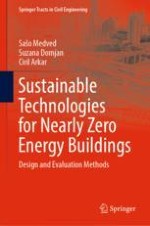2019 | OriginalPaper | Buchkapitel
14. Environmental Labelling of Buildings
verfasst von : Sašo Medved, Suzana Domjan, Ciril Arkar
Erschienen in: Sustainable Technologies for Nearly Zero Energy Buildings
Aktivieren Sie unsere intelligente Suche, um passende Fachinhalte oder Patente zu finden.
Wählen Sie Textabschnitte aus um mit Künstlicher Intelligenz passenden Patente zu finden. powered by
Markieren Sie Textabschnitte, um KI-gestützt weitere passende Inhalte zu finden. powered by
